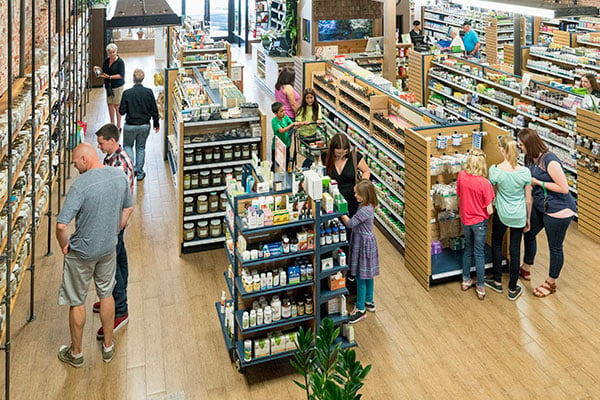We know yeast as that thing that smells wonderful and gives rise to delicious breads. We know that it’s a living thing that needs the right temperature and moisture activation to work correctly. We even know that it is regularly used for brewing beers. But what the heck is yeast extract?
and gives rise to delicious breads. We know that it’s a living thing that needs the right temperature and moisture activation to work correctly. We even know that it is regularly used for brewing beers. But what the heck is yeast extract?
Let’s start with the details of yeast. It is a single-celled fungus called Saccharomyces cerevisiae. S. cerevisiae is commonly known as baker’s yeast or brewer’s yeast. There are other species of yeast, but this is the one most commonly used. Yeast can ferment carbohydrates (like flour or barley) into carbon dioxide to make bread rise or into alcohol to add alcohol to beer.1 The difference here is whether there is oxygen available for the yeast to use in the fermentation process.2
Production
Yeast extract is usually produced from spent brewer’s yeast.1 This is accomplished through several steps:3
- First, the yeast is allowed to ferment. The process of fermentation allows the yeast to nourish itself and grow. It is then rinsed, centrifuged, and concentrated to remove the remaining carbohydrates.
- Next, the yeast is put in a tank that is at a temperature too high for the yeast to continue growing. The tank contains an aqueous solution and enzymes which break down macromolecules in the yeast, as well as cause the cell walls of the yeast to disintegrate so that the nutrients from the cells are released into the aqueous solution. This part of the process can be manipulated to change the flavor of the yeast extract.
- Lastly, the mixture is centrifuged to remove the cell walls and concentrated into a paste or liquid through a drying process.
The resulting product is yeast extract, sometimes known as Marmite or Vegemite.
But why?
There are several uses for yeast extract as an ingredient. Yeast extract has a slightly salty taste and a strong umami flavor comprised of glutamates and ribonucleotides that have a synergistic effect to further enhance the umami flavor.1 Yeast extract is rich and savory and has a bitter note. It is also aromatic.5 Given all these hedonic features, as well as the high nutrient density, yeast extract makes an excellent addition to many food items, such as sauces, meat marinades, soups, pasta fillings, seasonings, meat products, prepared meals, snacks, or simply spread on toast.1,5
A note on nutritional yeast
While similar, nutritional yeast is different from yeast extract. Nutritional yeast includes the entire yeast cell, unlike yeast extract, which has had the cell removed.4 Nutritional yeast is frequently used in-home meal preparation and can be used to create a non-dairy flavor similar to cheese.1
Resources
- The Umami-Rich Science of Nutritional Yeast, Marmite & Vegemite
- Attention, at-home bakers: Three surprising things you might not know about yeast
- How is yeast extract produced?
- Nutritional yeast
- What is yeast extract?
The views, opinions and technical analyses presented here are those of the author or advertiser, and are not necessarily those of ULProspector.com or UL Solutions. The appearance of this content in the UL Prospector Knowledge Center does not constitute an endorsement by UL Solutions or its affiliates.
All content is subject to copyright and may not be reproduced without prior authorization from UL Solutions or the content author.
The content has been made available for informational and educational purposes only. While the editors of this site may verify the accuracy of its content from time to time, we assume no responsibility for errors made by the author, editorial staff or any other contributor.
UL Solutions does not make any representations or warranties with respect to the accuracy, applicability, fitness or completeness of the content. UL Solutions does not warrant the performance, effectiveness or applicability of sites listed or linked to in any content.


